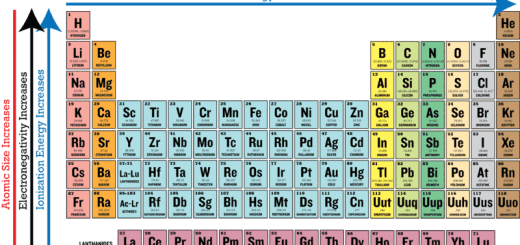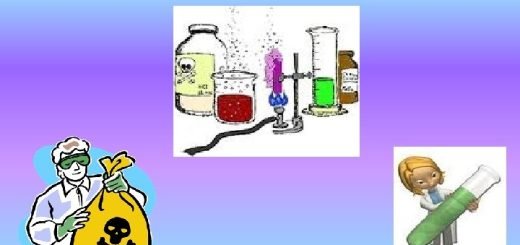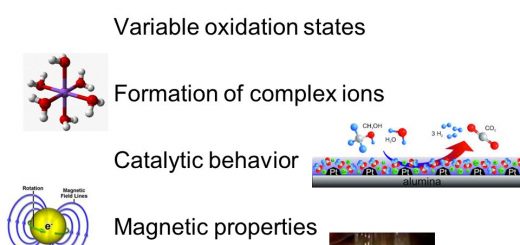Molecular orbital theory & Valence shell electron pair repulsion (VSEPR) theory
Sigma bond is stronger than pi bond, Because sigma bond is formed from the overlapping between the hybrid orbitals together or with the atomic orbitals by head, while pi bond is formed from the overlapping of the atomic orbitals only by side.
The explanation of the structure of ethylene molecule using the molecular orbital theory
The excitation process takes place for the two carbon atoms by acquiring the required amount of energy, After the two carbon atoms have been excited, the three orbitals of 2s, 2px and 2py are hybridized forming three hybridized orbitals, each of them is named sp² and contains one single electron.
To overcome the repulsive forces between the orbitals, they are directed in space as far apart as possible, thus the angles between them are 120°, The atom then will be more stable and the molecule takes the planar triangle shape.
It is observed that the 2pz orbital of each carbon atom is not involved in the hybridization process, These two orbitals lie perpendicular on the plane of the three sp² hybrid orbitals of each carbon atom, There are two types of the overlapping between carbon atoms and two types of bonds are formed, which are:
The sigma bond (σ) which is formed as a result of the overlap by head to head between: Two sp² hybrid orbitals of each carbon atom with two 1s orbitals of the two hydrogen atoms, forming the C − H bonds, The third sp² orbital of one carbon atom with the similar one of the other carbon atom, forming the C − C bond.
The pi bond (π) which is formed as a result of the overlap side by side between the two 2pz orbitals of the two carbon atoms, forming the C − C bond between the two carbon atoms.
The explanation of the structure of acetylene molecule using the molecular orbital theory
It is clear that after the excitation process has occurred in the two carbon atoms by acquiring the required amount of energy, hybridization occurs between one orbital 2px from the sub-level (p) orbitals and the 2s orbital producing two sp hybridized orbitals, each one of them contains one single electron.
To overcome the repulsive forces between the two hybridized orbitals, they are directed in space as far apart as possible, forming an angle of 180°, The atom then will be more stable and the molecule takes a linear shape.
It is observed that in each carbon atom, two atomic orbitals are remaining, such as 2py and 2pz are not involved in the hybridization process, The two carbon atoms are bonded together and with hydrogen atoms by two types of bonds as the following:
The sigma bond (σ) produced from the head to head overlap between:
- One sp orbital of one carbon atom with sp orbital of the other carbon atom, forming the (C − C) bond between the two carbon atoms.
- The remaining sp orbital of each carbon atom with the 1s atomic orbital of each hydrogen atom, forming the (C − H) bond for each carbon atom.
The pi bond (π) produced from the side-by-side overlap between:
- One py orbital of one carbon atom with py orbital of the other carbon atom, forming the (C − C) bond between the two carbon atoms.
- One pz orbital of one carbon atom with pz orbital of the other carbon atom, forming the (C − C) bond between the two carbon atoms.
The valence shell electron pair repulsion (VSEPR) theory
The shapes of molecules differ according to (free and bonded) electron pairs, which are found in the orbitals of the central atom in the covalent molecule.
VSEPR theory: Electron pairs (free and bonded) are distributed in the space around the central atom of the molecule, where the repulsion between them is the minimum to form the most stable shape of the molecules.
Shapes of the covalent molecules according to VSEPR theory
The stereostructure of any molecule is represented briefly by the following formula: AXnEm
Where A is the central atom in the molecule, n is the number of bond pairs, E is the electron lone pairs, m is the number of lone pairs, X is the atom bonded to the central atom.
SO2 molecule is abbreviated as AX2E, while H2O molecule is abbreviated as AX2E2, although each of them consists of three atoms, Because the central atom (A) in SO2 molecule is bonded with two oxygen atoms (X2) and carries one lone pair of electrons (E), whereas the central atom (A) in H2O molecule is bonded with two hydrogen atoms (X2) and carries two lone pair of electrons (E2).
The streostructure of ammonia molecule is three-base pyramid, while the arrangement of electron pairs in the same molecule takes tetrahedron shape, because the streostructure of ammonia molecule NH3 is three-base pyramid because of bonding the central atom with three bond pairs, while the arrangement of the electron pairs is tetrahedron shape because the total number of electron pairs (bond and lone) equals 3 + 1 = 4.
It is observed according to the theory that the lone pairs of electrons control the values of the angles between the bonds of the molecule because the lone pair is bonded to the nucleus of the central atom from one side and spreads to space from the other side.
The bond pair is bonded from both sides to the two bonded atoms, Increasing the number of the lone pairs of electrons in the central atom of the molecule leads to increasing the repulsive force between them, so, the angles between the covalent bonds of the molecule decreases, The repulsion force between (lone pair-lone pair) > (lone pair-bond pair) > (bond pair-bond pair).
The relation between the number of lone pairs of electrons and angles value between the covalent bonds in the molecule: When the number of lone pairs of electrons in the central atom increases, the repulsion force increases, causing a decrease in the value of the angles between the covalent bonds in the molecules.
The angle value between the covalent bonds in ammonia molecule is less than that in methane molecule, because the central atom in ammonia molecule carries one lone pair of electrons which repels with the bond pairs and that leads to decreasing the angle value between them, while the central atom in methane molecule does not carry any lone pair of electrons, so, the angle value between the bond pairs is larger than that in ammonia molecule.
BeF2 molecule is linear, while SO2 molecule is angular, although the central atom in each of them is bonded to two atoms, because the central atom in BeF2 molecule does not carry any lone pair of electrons, so, the repulsion force between the two bond pairs is as large as possible which makes the linear stereostructure of the molecule.
While the central atom in SO2 molecule carries a lone pair of electrons which repels strongly with the bond pair and this leads to reduce the angle value between them and makes the angular stereostructure of the molecule.
CO2 molecule is a non-polar, although it contains two polar bonds, because the linear streostructure of the molecule leads to cancelling the polar effect of each bond by the other bond [sum of polar pair (di pole) moment = zero].
The coordinate bond, Physical bonds (hydrogen bond and the metallic bond)
Theories explaining the covalent bond, Octet rule & Overlapped orbitals concept











